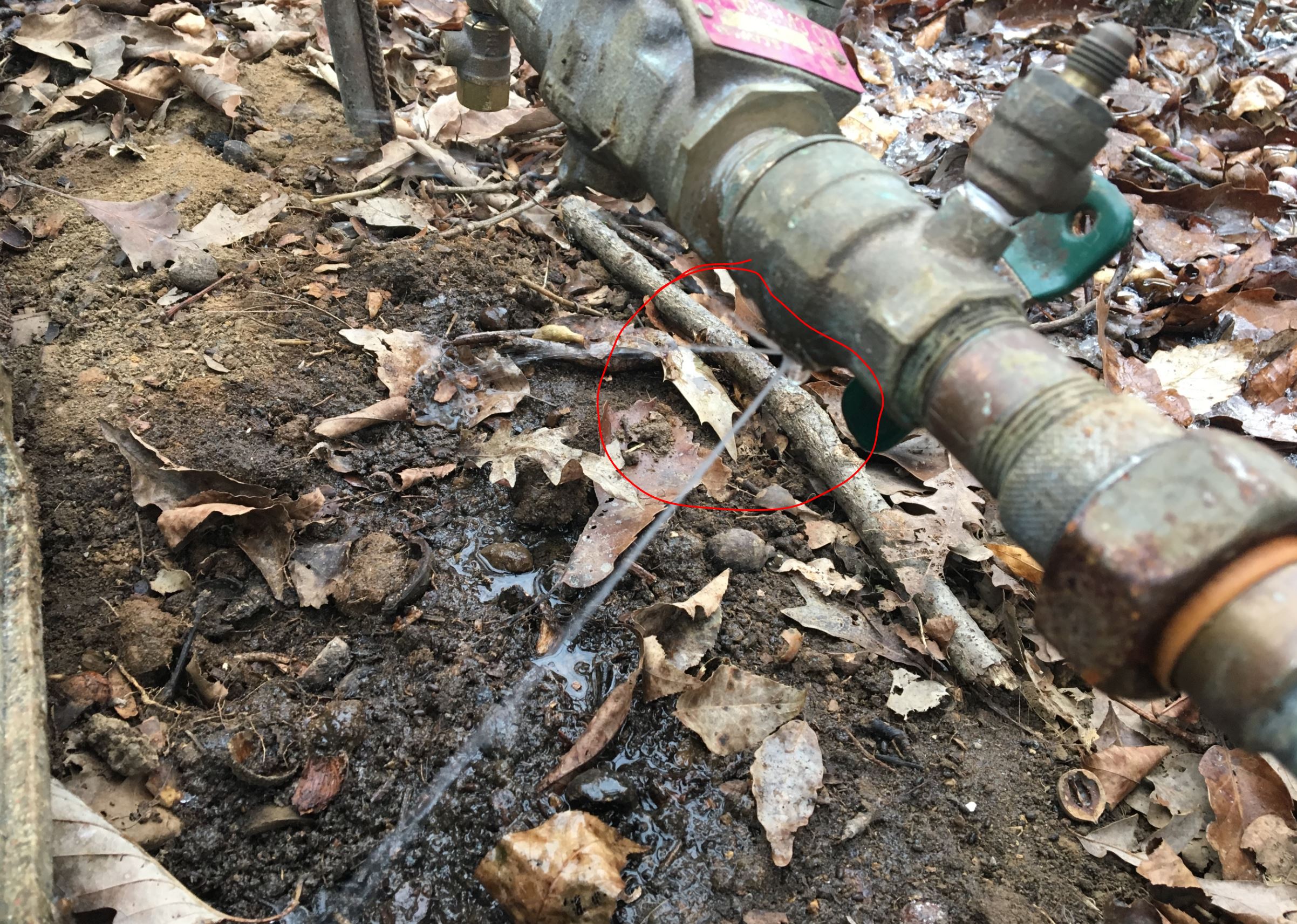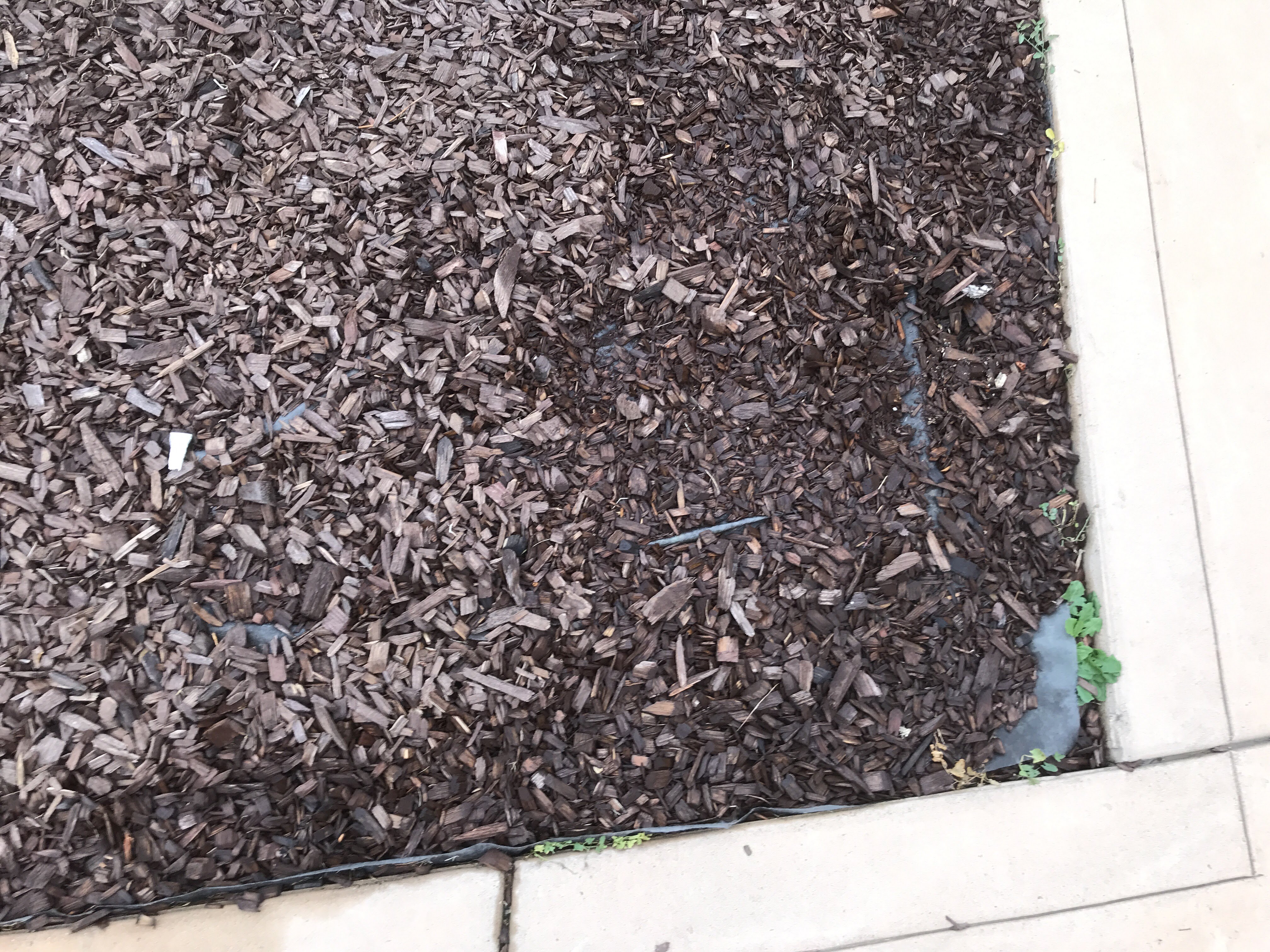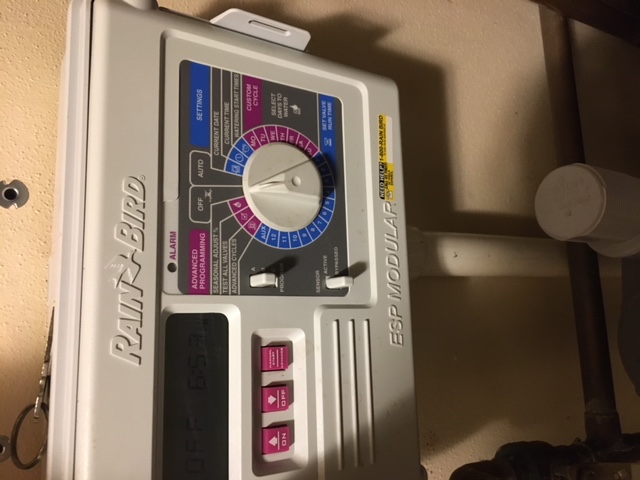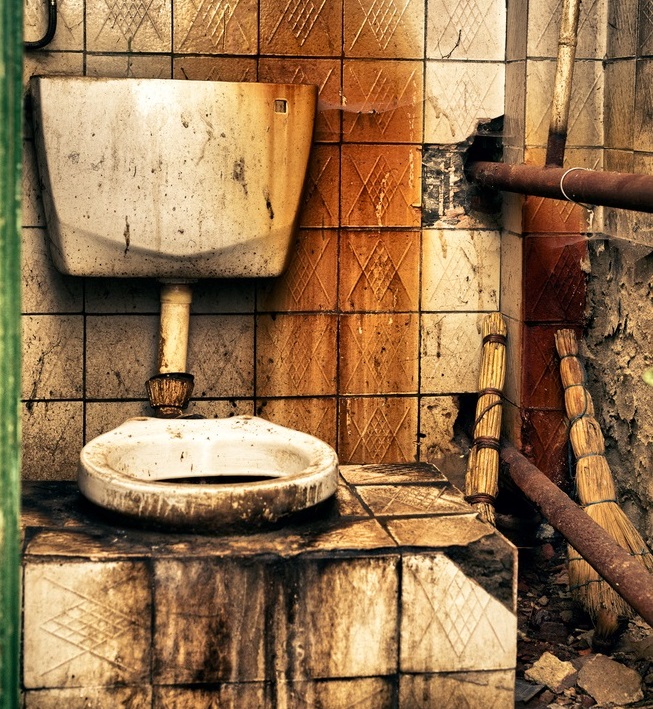The article on soils and settlement discussed the different soil types and there characteristics. Irrigation systems have to take the soil type of the yard into account as different soil types will hold more or less water than other types.
This Dale Sherman and this is my essay on irrigation systems.
During a home inspection on a house in west Fort Worth, Texas we inspected the irrigation system. We generally start at the controller/ clock and look for a zone map on or near the box to identify the zones and where to start to look at the spray heads. The photo attached is from the 1st zone. As you can see the head is completely broken and the water is shooting 5 feet in the air.
This is a photo of a backflow preventer ( a.k.a. vacuum breaker) for a residential lawn sprinkler system. It is designed to help prevent water from the underground sprinkler pipes from entering and possibly contaminating the water supply for the home.
I chose the irrigation system image in the NACHI image gallery. This image should be very useful to describe the different components of the system to my clients on their inspection reports. This course has described how to inspect the lawn irrigation system adequately in my opinion.
this image shows the use of a double check valve assembly in the customers lawn irrigation system. the double check valve does not need to be higher then the highest sprinkler head like the atmospheric version because of this the double check valve gives a customer a more streamline look with less equipment to stare at.
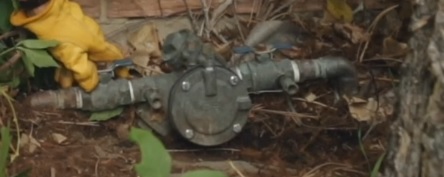
staying on the topic of lawn irrigation, it will be important to remember distances for sprinkler heads differ depending on the environment. closer for windy areas known as head to head verses a low wind area where distances can increase. it is also important to realize the type of heads being installed, if they are correct, if they are angled properly in proportion to the land as well as to each other.
An automatic sprinkler valve controls the flow of water from the mainline to each zone. The sprinkler valves are often grouped together in an arrangement called a sprinkler manifold which makes them easy to locate and reduces the amount of sprinkler wire required.
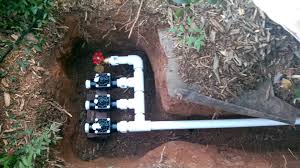
If water pressure is too high, the sprinkler system actually becomes a mist system and fogs the plantings. The slightest breeze will blow the water away from its intended area. All sprinkler heads are designed to work best when operating under an optimal water pressure
The sprinkler system was tested in manual mode and responded to the operating controls when tested.
Coverage should be monitored for the system and adjusted accordingly to ensure even watering of the landscaping.
The water spray from the sprinkler system should be re-directed away from the structure and/or any fencing, decks, etc., to decrease the possibility of damage.
Freeze/Rain Sensor: Not Present
The sprinkler system was tested in manual mode and responded to the operating controls when tested.
Spray coverage for the sprinkler system was not verified as part of this inspection. Coverage should be monitored for the system and adjusted accordingly to ensure even watering of the landscaping.
The water spray from the sprinkler system should be re-directed away from the structure and/or any fencing, decks, etc., to decrease the possibility of damage.
It is recommended that a freeze/rain sensor be installed on the sprinkler system.
This is an image from a home inspection I performed several months ago that shows a sprayer head directing water directly onto the foundation. I recommended in the report that the head be adjusted to properly spray away from the home.
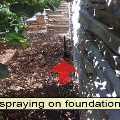
I read the article titled “Backflow Prevention” for this research and writing assignment. The article gives a good description of how a backflow preventer works as well as why they should be used to prevent the contamination of potable water supplies.
Upon arrival at the home to be inspected, the inspector heard a steady stream of water. The inspector lifted the decorative rock cover to expose the double check valve supplying the lawn irrigation system. The system had not been winterized (inspection occurred in early January after 10-12 days of below-freezing temperatures) and the check valve had failed, expelling water. The first shut-off valve was very difficult to close. Recommend evaluation and correction as necessary - which could include replacing the double check valve - by a qualified plumber or irrigation specialist. The leaking water is contributing to the utility bill at the home and may create a slip hazard as the pooled water freezes.
This is a picture of an area that has some sort of leak underground, maybe a broken pipe or a disconnection of some sort. This condition prevented the water from traveling to all the individual sprinkler heads in the zone.
I chose “Backflow Prevention,” by Nick Gromicko and Kenton Shepard. Backflow - the reverse flow of water in a system - can create significant hazards related to distribution of contaminants in a municipal water supply. Backflow can ban be created via back-pressure or back-siphonage. Effective means of preventing backflow include atmoshperic vacuum breakers, and backflow preventer assemblies (e.g., double check-valves). Inspectors should be familiar with installation requirements, but need not be certified by organizations like the AWWA or ABPA to inspect backflow prevention measures.
The diagram shows how an irrigation manifold and zone valves would be set up for watering of a lawn or plants or both. Sometimes these manifolds are set up underground inside a box with a removable top to allow access.
This is a rain bird controller on my lawn. My irrigation system is 30 years old. I upgraded to this controller about 10 years ago. This controller has many more features than the original old clock controller that was installed.
Over spray of sprinklers is way too common and should be evaluated annually to prevent spray on items such as the deck in the example. Personally, I have had a termite issue where a spray head was located right against a foundation wall and was leaving this area wet. Well it did not take long and termite showed up
As seen in this photo, brown spots have occurred in the lawn as a result of an improper irrigation system. Spray heads in these AREAS should first be checked for damage. Evaluated for low/high water pressure. Take sample the soil
The subject of this essay is lawn sprinklers contributing to deck post decay. From the image in the gallery, it appears that the spray head is directed towards the wood support post. The constant exposure to wet conditions would definitely contribute to moisture damage to the post. The spray head should be re-positioned so that the water is directed away from the post.


